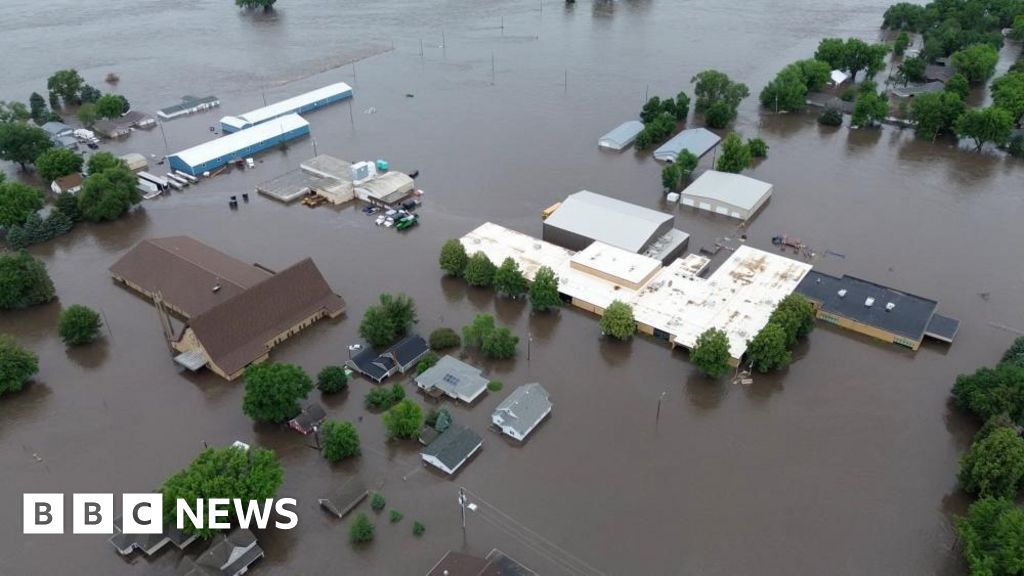In the Midwest region of the United States, a combination of extreme heat and flooding has caused widespread damage and disruption. According to multiple sources, at least one person has lost their life during the flooding in South Dakota.
The floodwaters have affected several cities in Iowa and South Dakota, including Rock Valley in Sioux County, Iowa. About 1,500 residents were evacuated from this city after the Rock River breached a levee. The city will begin accepting volunteer help on Monday at 9 a.m., with volunteers assisting in removing garbage, clearing houses, and retrieving abandoned vehicles.
Spencer in Clay County, Iowa, has also been hit hard by the flooding. The Little Sioux River reached record levels due to heavy rainfall causing surprise for the city. Public works director Mark White advises residents not to pump water from their basements due to potential damage from high soil pressure.
Eric Tigges, emergency management coordinator for Clay County, says flood waters need to drop 3 to 4 feet before assessments and repairs can begin. Spencer has warned residents about donation scams and advised them to give only through official channels or trusted businesses.
In Dickinson County, boaters are limited to 5 mph as water levels rise in Spirit Lake and Lake Okoboji. Forest City police urgently seek volunteers to help fill sandbags in a neighborhood on the banks of the Winnebago River. The Sioux City suburb of Dakota Dunes, South Dakota is under voluntary evacuation due to the Missouri and Big Sioux Rivers.
The Iowa Department of Transportation strongly discourages travel due to multiple road closures caused by flooding in Lyon, Sioux, O'Brien, Clay, Emmet, Dickinson and Plymouth Counties. Widespread flooding of rivers and streams has blocked major highways in northwest Iowa.
Drivers are advised to check local road conditions before traveling and avoid driving through flooded roadways as several inches of flowing water can lift a vehicle and carry it away.
Governors Kim Reynolds and Kristi Noem have predicted that the next few days will be tough, with the next few months to restore homes and families back being difficult.
The extreme heatwave has also affected tens of millions of Americans across the US. The National Weather Service (NWS) expects this heatwave to shift to the south-east, mid-south, and central and southern Plains this week.
Scientists warn that human-caused climate change is contributing to more frequent and intense extreme weather events such as heatwaves and flooding. The IPCC reports that heatwaves have become more frequent and more intense globally since 1950.
The NWS advises people to stay hydrated during the heatwave, especially those who are going to be outside. Heat advisory alerts are in effect for several regions of the US.



